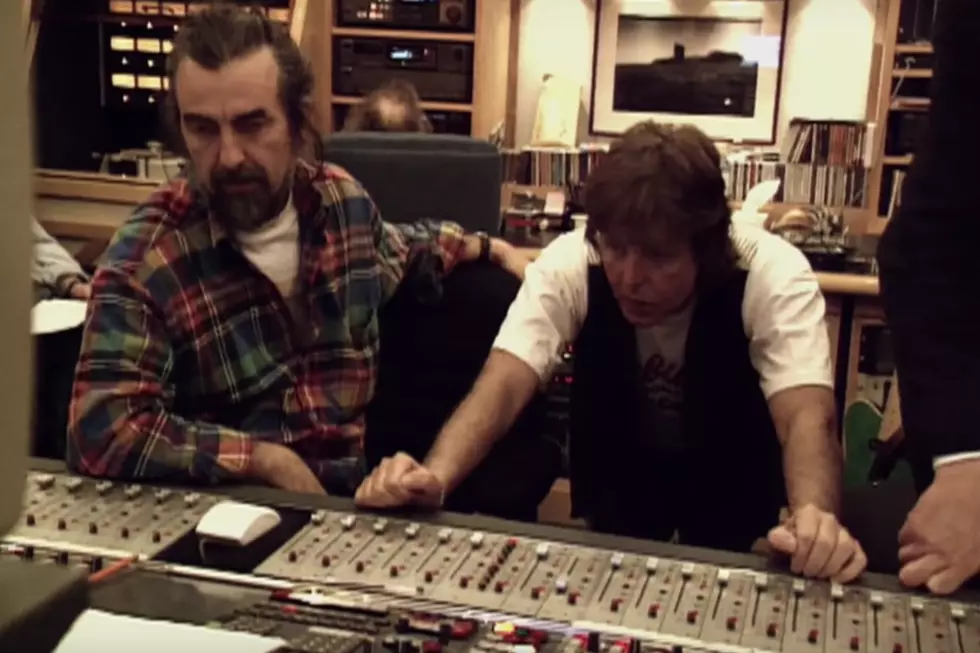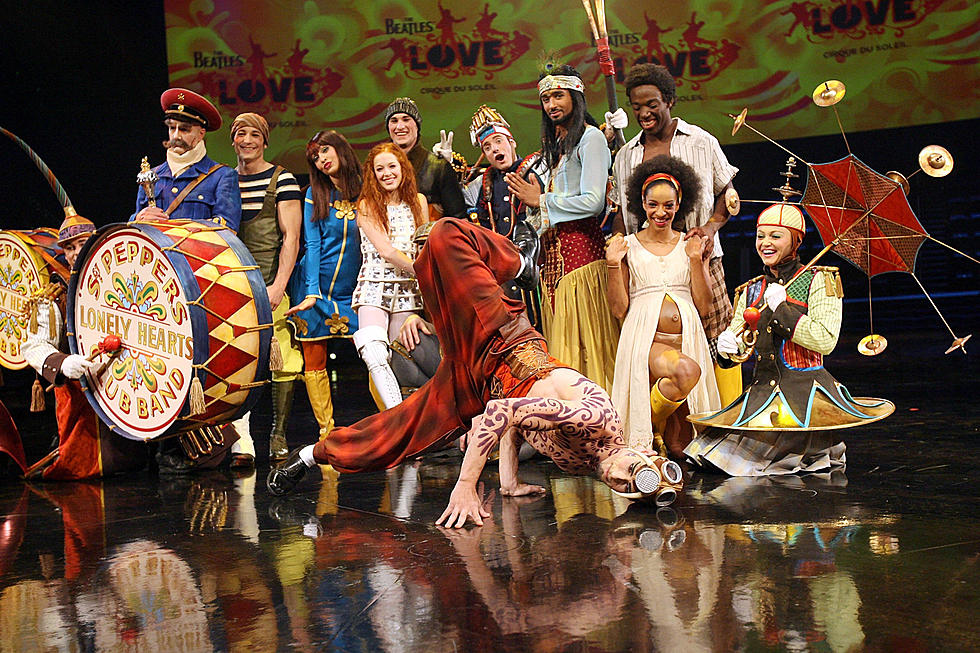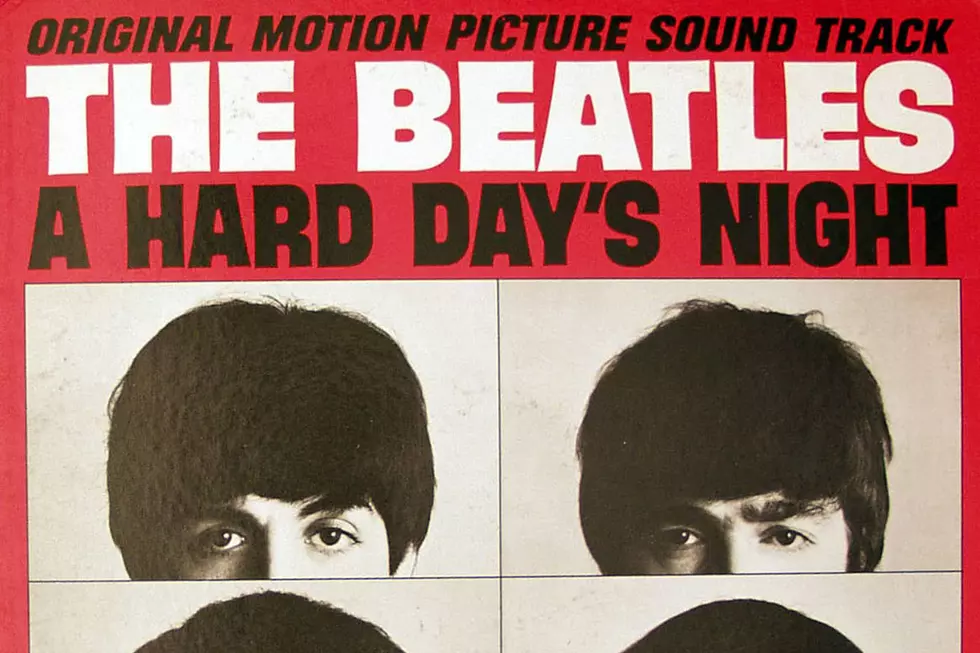
How the Beatles Finally Reunited to Complete ‘Free as a Bird’
George Martin begged off. Even Paul McCartney said he was unsure at first. Producer Jeff Lynne, however, was thrilled at the prospect of a '90s-era Beatles reunion.
He'd been working with George Harrison for some time, producing his 1987 comeback album Cloud Nine and collaborating in the Traveling Wilburys. "One day, George said to me, 'You fancy doing it, then – the Beatles one?'" Lynne told the San Francisco Gate in 1995. "And I said, 'Uhhhhh, yes, please.'"
John Lennon's involvement came in the form of an old unfinished demo, recorded in 1977 for a planned musical called The Ballad of John and Yoko that was put aside in the wake of his murder. Yoko Ono provided the tapes that also included rough early versions of "Real Love" (which they later completed), "Grow Old Along With Me" and "Now and Then" (which they passed on).
McCartney, Harrison and Ringo Starr initially got back together in February 1994 for three weeks at McCartney's converted home studio on his rural south England estate. It had been by no means certain that this reunion – later dubbed the "Threetles" – was going to get off the ground.
The results were slated for a sprawling Anthology project that itself had been in the works for five years. Any new music would be attached to what became an 11-hour documentary scheduled to air in November; the film was to be accompanied by a three-volume, six-disc set of Beatles outtakes and rarities.
Ono handed McCartney the Lennon cassettes when his former bandmate was inducted into the Rock & Roll Hall of Fame the month before. Now all that remained was to find a way to work together again. The Beatles hadn't been in the same studio since January 1970, when – ironically enough – McCartney, Harrison and Starr (but not Lennon) convened to complete "I Me Mine" and "Let It Be."
McCartney constructed a kind of ruse to get past the initial trepidation. "We just pretended that he'd gone home on holiday – as if he'd said, 'Just finish it up, I trust you. Just do it,'" McCartney said during a 1994 press event. "We just treated it like any old track the Beatles might have done." Still, he added, "It was kind of spooky, really."
The demo needed extensive work, even before the remaining bandmates began their first tentative steps toward collaboration. "We lived with the tapes for a bit, just listening to them," Lynne told San Francisco Gate. "They were very noisy and required a lot of work to make them suitable to go on to a track."
Listen to the Beatles Perform 'Free as a Bird'
Lennon recorded "Free as a Bird" using a portable tape recorder with a small mic on top of his piano, which meant his vocal and accompaniment couldn't be separated – only cleaned up. The demo also had to be edited because a relaxed Lennon wasn't keeping steady time.
Lynne edited the song to smooth out the tempo, but the others still had misgivings. "At the beginning, it was very hard, knowing that we were going in there to do this track with [John]," Starr says in Still the Greatest: The Essential Songs of the Beatles Solo Careers. "It was pretty emotional. He wasn't there."
Starr reportedly used his original Ludwig drum kit on the sessions, while Lynne doubled McCartney's piano with Lennon's original turn, bolstering the sound. He described it to the Los Angeles Times as "sort of like a jigsaw puzzle, really, the way we got it to work." They then added vocals, filling in places where Lennon hummed unwritten lyrics and singing along with one another for the first time in decades. "It was like he was in the next room," McCartney says in Still the Greatest. "Fuck, I'm singing harmony with John! It's like an impossible dream."
As the painstaking work continued, Harrison reportedly quipped: "I hope someone does this to all my crap demos when I'm dead, making them into hit songs."
As perhaps expected, old tensions arose. McCartney and Harrison – in a repeat of an argument laid bare during the Let It Be film – disagreed over the guitar solo.
"I felt that the song shouldn't be pulled in any way," McCartney says in Still the Greatest. "It should stay very Beatles. It shouldn't get to sound like me solo or George solo, or Ringo for that matter. It should sound like a Beatles song. So, the suggestion was made that George might play a simple, bluesy lick – rather than get too melodic."
They disagreed about the words needed to complete "Free as a Bird," as well. "We wrote a new section ... which, in fact, was one of the reasons for choosing the song. It allowed us some input," McCartney told a fan-club interviewer in 1994. "That was really like working on a record with John, as Lennon/McCartney/Harrison, because we all chipped in a bit on this one. George and I were vying for best lyric."
The genesis of the track, and the source of its openhearted theme, was a period just after Lennon had finally regained legal residency in the U.S. (He battled immigration for years after being ordered to leave by President Richard Nixon, who was reportedly angered by Lennon's anti-war agitations.) That puts lines like "Free as a bird, it's the nearest thing to being free as a bird" into sharp perspective.
Listen to John Lennon's Original Demo of 'Free as a Bird'
McCartney and Harrison ultimately took turns singing newly completed lines that felt more keyed to this unlikely reunion: "How did we lose the touch? It always meant so much. Do we really live without each other." Credited to all four Beatles, "Free as a Bird" represented just the third joint co-writing effort to see wide release, after 1970's "Dig It" and 1967's "Flying."
When they finally finished "Free as a Bird," everyone in the room was ecstatic. "It sounds like the bloody Beatles!" Starr reportedly enthused. But others weren't so sure, including music writers and some fans.
McCartney, for instance, said he was accosted by "a really obnoxious customs man when I was going through New York – a very serious and pasty lad who said, 'The project you're doing with the Beatles?' I said, 'Yeah?' 'I just wanna tell you I don't consider it a Beatles project without John.'"
The truth is, McCartney hadn't either. "I don't need this shit," he thought to himself, before shooting back: "I don't care what you think – and it shows how much you know anyway, because John is fucking on it."
In the end, McCartney argued that was the principal reason for working on "Free as a Bird": "Because John's voice is there." That way, he added, "we can really say it is the Beatles. We're all together. We've done the impossible. We've pulled it off."
Released that November, "Free as Bird" went to No. 2 in the U.K., and No. 6 in the U.S. Whatever critics thought of it, the song – and the sprawling Anthology series – helped a new generation discover the Beatles. Older albums like 1965's Rubber Soul (which saw a 67 percent jump in sales) and 1969's Abbey Road (almost 50 percent) began flying off store shelves. Capitol Records reported that more than 40 percent of those who purchased Anthology were teens.
"I think they wanted to finish on an up-note, as opposed to the other ending, and do some nice music together and have fun again. Put the past behind them," Lynne told the Los Angeles Times. "And that's how it worked out. We had some great laughs."
The Best Song From Every Beatles Album
See the Beatles in Rock’s Craziest Conspiracy Theories
More From Ultimate Classic Rock









